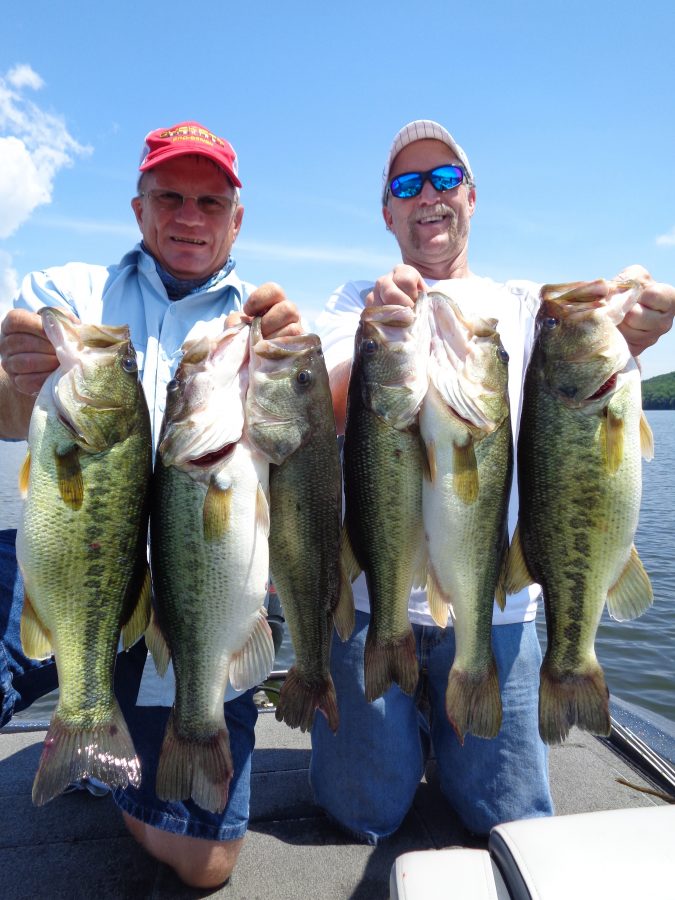by Capt. Jake Davis

Let’s take a short look at weather and its effect on how the fish respond. Nothing changes the bite more than a few degrees of water temperature increase or a cold front in the early springtime. This year, with all the constant up and down weather change, this has been extremely evident. The increase in water temperature effect is easily noticed during the change of real cold water like in the 40’s moving to the 50’s, but it also is extremely obvious in the change of 55 degree water to 57 degree water. A small change in your tactics can make or break a day on the lake. The key is knowing when to move to the shallow water with the slight changes in water temperature.
The first thing that is important is the type of day. Is it sunny or cloudy? There is no question the sun warms the water temperature from the early part of the day to the mid and later part. This is your sign to start hunting warmer water to find a bite. The bass will turn on just like a light bulb when we see this sunny weather make slight changes in water temperature. Most times the movement is very near the deep water, so look for main river points, then the bays around close to deep water to find the first temperature change. Bass migrate back and forth several times throughout a given 24 hour period, thus main river points are exceptional places to start. Mud lines almost always show water temperature increases. Fishing the edge of the mud lines can be critical as the fish will hang on the mud line next to the increased water temperature area.
As we move into spring, the bass migrate from their winter haunts to the spawning areas like clockwork. The key is to understand the lake you’re fishing on so you can fish the migration (pre-spawn areas). Look for likely spawning areas, then adjust to transition areas; the main river points, road beds in this area and grass or stumps along the way. If the lake is shallow, then migration is probably done through grass points, stump fields and just about any kind of hard bottom or hard bottom structure. If the lake is deep, then your paths are more likely to be deep dropping points and, many times, boat houses near dropping creeks are the paths you’re looking for. No matter what lake you’re on, the rocky areas warm first and the migration path normally starts near the rocky areas.
If you like fishing fast moving baits, rattle baits, square bill crankbaits or burning swimbaits over grass beds can be extremely successful. Any fast moving presentation can catch you a big sack of fish in a short day on the water. As the month of March goes on, burning big spinnerbaits normally proves to be an ideal time to do it. Anglers should never pass up boat docks on the bright sunny days, especially the docks where the creeks front end the spawning grounds. I also really like a football head jig because the bass always stage and move as water temperature increases, allowing you to slowly move or drag that football head on the bottom as they slowly migrate with increased water temperature.
Capt. Jake Davis is a USCG Licensed Professional Fishing Guide on Guntersville, Tims Ford and Normandy lakes; to reserve your “Day on the Lake,” visit www.midsouthbassguide.com or call/email 615.613.2382 msbassguide@comcast.net
